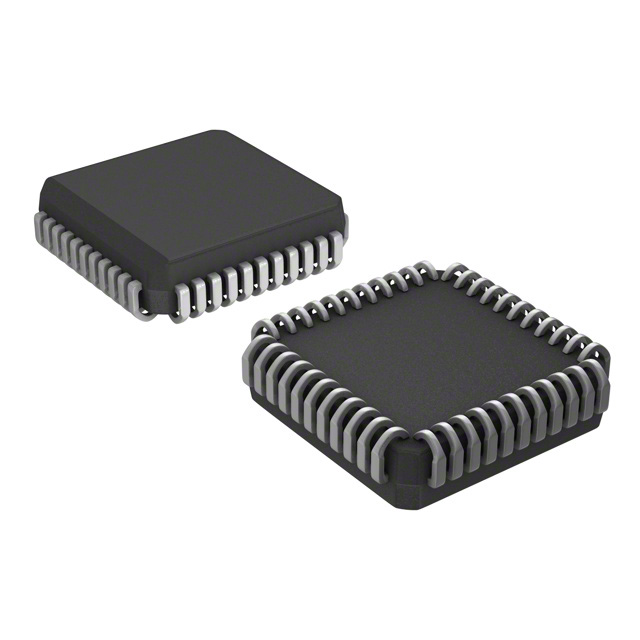Consulte las especificaciones para obtener detalles del producto.

AT89C51CC03U-SLRIM
Product Overview
Category
The AT89C51CC03U-SLRIM belongs to the category of microcontrollers.
Use
This microcontroller is commonly used in various electronic applications that require embedded control systems.
Characteristics
- High-performance 8-bit microcontroller
- Low-power consumption
- Integrated with Flash memory for program storage
- Supports a wide range of input/output (I/O) options
- Offers versatile communication interfaces
- Provides on-chip peripherals for enhanced functionality
Package
The AT89C51CC03U-SLRIM is available in a compact and durable package, ensuring easy integration into electronic circuits.
Essence
The essence of this microcontroller lies in its ability to provide efficient and reliable control capabilities for a wide range of electronic devices and systems.
Packaging/Quantity
The AT89C51CC03U-SLRIM is typically packaged in reels or trays, with each containing a specific quantity of microcontrollers. The exact packaging and quantity may vary depending on the supplier.
Specifications
- Architecture: 8-bit
- CPU Speed: Up to 40 MHz
- Program Memory Size: 64 KB
- RAM Size: 2 KB
- Number of I/O Pins: 32
- Communication Interfaces: UART, SPI, I2C
- Operating Voltage Range: 2.7V to 5.5V
- Operating Temperature Range: -40°C to +85°C
Detailed Pin Configuration
The AT89C51CC03U-SLRIM features a total of 32 pins, each serving a specific purpose. The pin configuration is as follows:
- P0.0
- P0.1
- P0.2
- P0.3
- P0.4
- P0.5
- P0.6
- P0.7
- RST
- P1.0
- P1.1
- P1.2
- P1.3
- P1.4
- P1.5
- P1.6
- P1.7
- XTAL1
- XTAL2
- GND
- VCC
- P2.0
- P2.1
- P2.2
- P2.3
- P2.4
- P2.5
- P2.6
- P2.7
- ALE/PROG
- PSEN
- EA/VPP
Functional Features
The AT89C51CC03U-SLRIM offers several functional features that enhance its performance and versatility:
- High-speed processing capabilities
- In-system programmability
- On-chip memory for program storage
- Multiple communication interfaces for seamless integration with other devices
- Flexible I/O options for connecting external components
- Built-in timers and counters for precise timing operations
- Interrupt support for efficient event handling
Advantages and Disadvantages
Advantages
- High-performance microcontroller suitable for a wide range of applications
- Low-power consumption for energy-efficient operation
- Versatile communication interfaces enable easy connectivity with other devices
- Ample program and data memory for complex applications
- Robust on-chip peripherals enhance functionality
Disadvantages
- Limited number of I/O pins may restrict the number of external components that can be connected directly
- Relatively higher cost compared to some other microcontrollers in the market
Working Principles
The AT89C51CC03U-SLRIM operates based on the principles of microcontroller architecture. It executes instructions stored in its program memory, interacts with external devices through I/O pins, and utilizes on-chip peripherals to perform various tasks. The microcontroller's central processing unit (CPU) coordinates these operations, ensuring efficient control and data processing.
Detailed Application Field Plans
The AT89C51CC03U-SLRIM finds applications in various fields, including but not limited to:
- Industrial automation systems
- Home appliances control
- Automotive electronics
- Medical devices
- Consumer electronics
- Internet of Things (IoT) devices
- Robotics
- Security systems
Detailed and Complete Alternative Models
For those seeking alternative options, the following microcontrollers can be considered:
- ATmega328P by Atmel
- PIC16F877A by Microchip Technology
- STM32F103C8T6 by STMicroelectronics
- MSP430G2553 by Texas Instruments
- LPC1768 by NXP Semiconductors
These alternatives offer similar functionalities and are widely used in the industry.
In
Enumere 10 preguntas y respuestas comunes relacionadas con la aplicación de AT89C51CC03U-SLRIM en soluciones técnicas
Sure! Here are 10 common questions and answers related to the application of AT89C51CC03U-SLRIM in technical solutions:
Q: What is the AT89C51CC03U-SLRIM microcontroller used for? A: The AT89C51CC03U-SLRIM microcontroller is commonly used in various technical solutions, such as embedded systems, industrial automation, robotics, and IoT applications.
Q: What is the programming language used for AT89C51CC03U-SLRIM? A: The AT89C51CC03U-SLRIM microcontroller can be programmed using assembly language or high-level languages like C.
Q: How much program memory does the AT89C51CC03U-SLRIM have? A: The AT89C51CC03U-SLRIM microcontroller has 64KB of Flash program memory.
Q: Does the AT89C51CC03U-SLRIM support external memory expansion? A: Yes, the AT89C51CC03U-SLRIM supports external memory expansion through its address and data bus.
Q: What is the operating voltage range of the AT89C51CC03U-SLRIM? A: The AT89C51CC03U-SLRIM operates within a voltage range of 2.7V to 5.5V.
Q: Can the AT89C51CC03U-SLRIM communicate with other devices? A: Yes, the AT89C51CC03U-SLRIM supports various communication interfaces like UART, SPI, and I2C, enabling it to communicate with other devices.
Q: Does the AT89C51CC03U-SLRIM have any analog-to-digital converters (ADC)? A: Yes, the AT89C51CC03U-SLRIM has an 8-channel, 10-bit ADC for analog signal conversion.
Q: Can the AT89C51CC03U-SLRIM generate PWM signals? A: Yes, the AT89C51CC03U-SLRIM has built-in hardware support for generating Pulse Width Modulation (PWM) signals.
Q: Is the AT89C51CC03U-SLRIM suitable for low-power applications? A: Yes, the AT89C51CC03U-SLRIM offers power-saving features like idle mode and power-down mode, making it suitable for low-power applications.
Q: Are there any development tools available for programming the AT89C51CC03U-SLRIM? A: Yes, Atmel provides a range of development tools, including IDEs, compilers, and debuggers, to facilitate programming and debugging of the AT89C51CC03U-SLRIM microcontroller.
Please note that these questions and answers are general in nature and may vary depending on specific requirements and application scenarios.

